SUMMERSVILLE, W.Va. — In a ravine beside the U.S. 19 expressway near Summersville Lake, 48 graves lie beneath the trees, marked by small stones. Paddlers and kayakers by the hundreds walk past on their way to the water, rarely pausing at the modest memorial.
Few may realize that beneath this quiet ground are the remains of men who gave their lives digging a tunnel that powered a chemical company’s plant and whose deaths became known as the worst industrial disaster in American history.
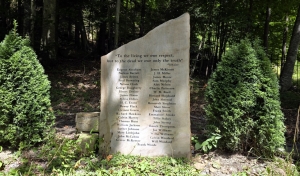
The Hawks Nest Tunnel disaster of 1930–31 claimed the lives of more than 700 men, most of them poor, Black migrant workers. They were buried hastily, some under the cover of darkness, and later exhumed and moved when the highway expanded. For decades, the graves lay unmarked. Only in 2012 did a monument finally rise to honor the men, the culmination of a long effort by local residents, historians, and descendants.
Building the Hawks Nest Tunnel
In 1930, contractors began work on a tunnel through Gauley Mountain near Gauley Bridge, West Virginia, a drive of about 30 miles from the graveyard. Measuring 3.8 miles long and 32 to 36 feet wide, it was designed to divert water from the New River to a hydroelectric plant downstream. That power would fuel Union Carbide’s metals plant in Alloy.
The project offered desperately needed jobs during the Great Depression. Nearly 5,000 men were recruited, many traveling from the South. About two-thirds of the workforce was African American. For a few dollars a day, they drilled and blasted through solid rock.
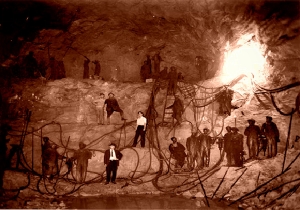
The sandstone in Gauley Mountain contained some of the purest silica in the region. Dry drilling filled the tunnel with white dust so thick that men emerged coated in powder, coughing and choking. The confined space lacked ventilation, and workers were not provided with masks. Inside, the tunnel was described as a “white cloud of silica.”
The result was catastrophic. Silica exposure caused acute silicosis, a preventable but incurable lung disease that scars the lungs until victims suffocate. Some men sickened within months; others died in less than a year.
Premeditated death without dignity
The deaths came quickly and in staggering numbers. As men fell ill, struggling to breathe, many were driven from the camps to die elsewhere. Families received little information.
Death from silicosis is a slow, suffocating ordeal that gradually steals a person’s breath and strength. At first, the disease begins quietly, with a persistent cough and shortness of breath that comes with exertion, often mistaken for a lingering cold. As the lungs fill with scar tissue, breathing becomes progressively more difficult, and simple tasks like walking or climbing stairs leave the body gasping for air.
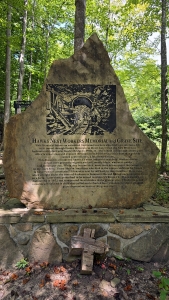
Chest tightness and pain soon become constant companions. Coughing fits grow severe, sometimes bringing up blood-tinged phlegm, and the body begins to betray itself with fevers, night sweats, and unintentional weight loss. In the final stages, the lungs stiffen almost completely, leaving the victim unable to take a full breath, oxygen levels drop, and cyanosis sets in, turning lips and fingertips blue. The heart struggles to compensate, often failing as the body slowly suffocates.
For the Hawks Nest workers, this process could happen in mere months, accelerated by the dense clouds of silica dust they breathed daily, with little hope of relief and often no support from employers or family. The suffering was both physical and emotional, marked by isolation, relentless pain, and the knowledge that death was inevitable.
Racial segregation compounded the tragedy. Local “white” cemeteries refused to accept Black bodies. An undertaker in Summersville, living 40 miles north of the tunnel, was paid $50 per body to dispose of the dead. According to accounts, corpses were stacked on the back of a flatbed truck.
The undertaker buried a handful in a small cemetery in Summersville, but as the numbers rose, he ran out of space. At night, under the cover of darkness, he buried about 48 victims at his family farm. There they remained, in unmarked graves, for more than 40 years.
One local resident, Owen Symes, later recalled rabbit hunting on Martha White’s farm, where many other Black workers were buried:
“I used to rabbit hunt over there on the Martha White farm out in the fields before Rt. 19 came through here. I could see the graves. They were little soft mounds of dirt with grass over them. If you were not careful, you could step on one and it would cave in. They were in rows right up and down the fence line. They moved a lot of them when the highway came through. Dug up the graves and took what was left down by Hughes Bridge on the Gauley River to bury them again.”
Evidence of calculated slaughter
Historical evidence shows that Union Carbide officials were aware that workers would die from the Hawk’s Nest Tunnel project due to exposure to silica dust, and there is strong evidence that they calculated and accepted this risk in advance.
Officials knew that silica dust was deadly. By the 1920s, industrial medicine already recognized silicosis as a lethal occupational disease, and protective measures like respirators and ventilation were already well-established in mining and construction.
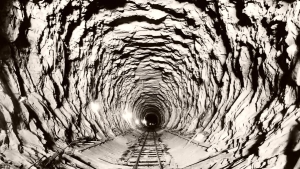
Testimony and later investigations suggest officials calculated that it was cheaper to push the project forward with expendable workers than to slow down or invest in dust controls. There are accounts from congressional hearings and lawsuits that point to the company knowing deaths were inevitable and essentially treating the workers as “disposable.”
Surviving documents and legal proceedings show the company tracked sickness and deaths but resisted compensating victims’ families. Historian Martin Cherniack’s book The Hawk’s Nest Incident: America’s Worst Industrial Disaster (1986) argues that Union Carbide essentially conducted a human experiment in mass silicosis exposure.
Even after the terrified workers began dying, companies chose to keep the project moving quickly, replacing dying workers rather than halting or improving safety, effectively accepting the fatalities to finish faster and save costs. The suffocation of their employees was a matter of corporate indifference, not ignorance.
West Virginia officials were aware
State and local officials were also aware of the horrific deaths, and there’s strong historical evidence that some level of willful negligence or tacit complicity occurred, though direct “conspiracy” has not been proved. The governor at the time was William Gustavus Conley (1866-1940), a lawyer and politician who served as a former attorney general.
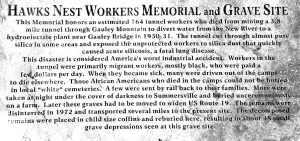
State labor and health authorities were informed about deaths as they occurred, and reports from local doctors, families, and journalists documented the fact that workers were rapidly succumbing to silicosis and disappearing without explaination in the night.
Occupational health and safety laws at the time were admittedly weak, and enforcement was minimal. State inspectors also had limited authority and resources to intervene, particularly against large corporate projects. Federally, the public health service was aware of deadly silicosis risks but generally deferred to state agencies, which evidently did nothing.
Engineers and physicians also warned state officials that the workers were being exposed to deadly silica dust without respirators. Yet, the project continued at full speed. The tunnel promised electricity and jobs in the region during the Great Depression, creating pressure on state and local authorities to prioritize economic gain over worker safety.
Historians like Martin Cherniack and accounts from the U.S. House subcommittee in 1936 suggest that state officials effectively allowed the deaths to happen by turning a blind eye, even when they knew fatalities were occurring at an alarming rate.
Unearthed by progress, swiftly hidden
In 1972, when U.S. 19 was widened, the old burial sites were disturbed. The W.Va. Department of Highways contacted the son of the original undertaker. The bodies—decomposed, fragile, and incomplete—were exhumed and reinterred unceremoniously in a ravine on state property off Whippoorwill Road near Summersville Lake.
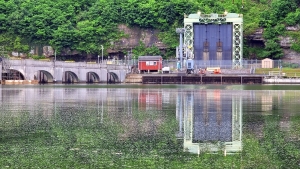
Because of the condition of the remains, they were placed in child-sized coffins and reburied in rows. The shallow depressions of those coffins are still visible today. For four decades, the grave sites were left unmarked. Brush and debris covered the area. Few people knew it was hidden there. State highway officials turned their heads and remained silent under the governance of Governor Arch A. Moore, Jr.
Historians have noted that Moore also governed during and after the Buffalo Creek flood of 1972, an industrial disaster in which a coal slurry impoundment dam burst, killing 125 people, injuring 1,121, and leaving more than 4,000 homeless. Afterward, the governor's ad hoc commission of inquiry was made up entirely of members sympathetic to the coal industry or government officials whose departments might have been complicit in the genesis of the flood.
Rediscovery and Memorial
In 2009, Summersville area residents Charlotte and George Neilan began preparing an application for a grant to fund a workers’ memorial. With the help of West Virginia State University professor Richard Hartman, the history of the graves was rediscovered and documented.
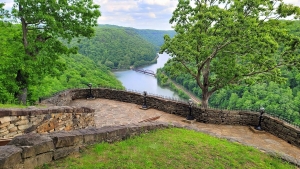
County workers and local high school students cleared the overgrown site, and in September 2012, a memorial was dedicated. The stone monument at the cemetery entrance bears an inscription that recounts the tragedy:
“This Memorial honors an estimated 764 tunnel workers who died from mining a 3.8-mile tunnel through Gauley Mountain to divert water from the New River to a hydroelectric plant near Gauley Bridge in 1930–31. The tunnel cut through almost pure silica in some areas and exposed the unprotected workers to silica dust that quickly caused acute silicosis, a fatal lung disease. Later, these graves had to be moved to widen US Route 19. The remains were disinterred in 1972 and transported several miles to the present site. The decomposed remains were placed in child-size coffins and reburied here, resulting in about 48 small grave depressions seen at this grave site.”
The dedication ceremony drew residents, students, and historians to the Old Main auditorium in Summersville. Mayor Robert Shafer welcomed the crowd, calling the tribute “long overdue.”
Former Congressman Nick Rahall spoke boldly, drawing a line between Hawks Nest and later disasters such as Upper Big Branch and a host of other industrial tragedies that define West Virginia history.
“Their suffering helped ignite workers’ rights in America,” Rahall said. “Those men endured dangers for a paycheck and for their daily bread. Let us keep their stories alive so future generations do not repeat these mistakes.”
For families of the dead, the ceremony was more than symbolism. It was recognition—brief though it may have been—after decades of silence.
America’s Worst Industrial Disaster
The Hawks Nest Tunnel disaster remains one of the darkest chapters in U.S. labor history. Of the roughly 5,000 men who worked on the project, nearly 3,000 labored inside the tunnel. Silicosis claimed at least 764 lives, making it the greatest death toll from the disease in American history.
Congressional hearings in the 1930s recorded 476 deaths; other sources range from 700 to more than 1,000. The uncertainty reflects how many men were driven away sick, dying later without being counted.
In the camps, management reportedly denied breaks and, in some cases, forced men to continue working at gunpoint. The company completed the project more than twice as fast as projected—but at the expense of human lives.
Because the tunnel was licensed as a civil engineering project, even minimal mining safety laws did not apply. Workers received no protection from dust exposure. Physicians called the disease “tunnelitis,” but its real name—silicosis—was already known as incurable.
Literature, Memory, Forgetting
The disaster entered American culture as writers and musicians gave it voice. Poet Muriel Rukeyser wrote The Book of the Dead in 1938, a cycle of poems documenting the tragedy. Folk singer Josh White, under the pseudonym “Pinewood Tom,” recorded "Silicosis Is Killing Me." West Virginian author Hubert Skidmore wrote the 1941 novel "Hawk’s Nest," fictionalizing the workers’ stories.
Later accounts included Vladimir Pozner’s "Disunited States" (1938), Denise Giardina’s "Saints and Villains" (1998), and numerous historical studies. But for decades, the graves themselves remained nearly invisible.

Historian C. Lloyd Gibson, who attended the 2012 dedication, scoffed at the proceedings, predicting that state officials and Randall Reid-Smith, cabinet secretary for the West Virginia Division of Culture and History, would swiftly move to bury the event, which the State Historic Preservation Office should be promoting.
"The Battle of Blair Mountain, the Hawks Nest Tunnel Disaster, the Buffalo Creek Flood—these defining events in West Virginia history will continue to be denied by state officials who have offered little to no assistance in this effort," Gibson said.
Summersville Lake
Today, the memorial to the tragedy is sheltered below a rocky hillside at 98 Hilltop Drive near Summersville Lake. On summer days, the sound of laughter drifts from kayakers and stand-up paddleboarders parking along the road, heading to the water. It is, as observers note, a strange juxtaposition of life and death—that such joy could exist alongside such horror.
The small stones and shallow depressions in the ground mark where the decomposed remains were placed in coffins. Wooden crosses, molded and broken, lie in the leaves around them. They are not just graves but symbols of neglect and belated recognition. And now they are again neglected and all but ignored by officials.
The hellish tunnel itself remains in use, still diverting water to generate electricity for the Alloy plant. Its engineering success endures. But its human cost remains etched in stone at Summersville.
A Guilty Silence
For more than 40 years, the workers buried on Whippoorwill Road lay forgotten, their resting place unmarked, their stories silenced by racism, poverty, and corporate denial.
The 2012 dedication gave them back their voices, at least feebly. The memorial stands as both a grave site and a testimony, ensuring the Hawks Nest Tunnel disaster will not be erased from history.
However, the cemetery is much overgrown, and wooden crosses planted at the graves have been left by state and local officials to rot. No exhibit interpreting what is categorically described as America's worst industrial disaster has ever been created—neither here nor at Hawks Nest.
As Congressman Rahall urged at the ceremony: “Let us keep their stories alive so future generations do not repeat these mistakes.”
That call endures, though the weeds are creeping back.
Map showing Hawks Nest Disaster Cemetery
Sign up to receive a FREE copy of West Virginia Explorer Magazine in your email weekly. Sign me up!
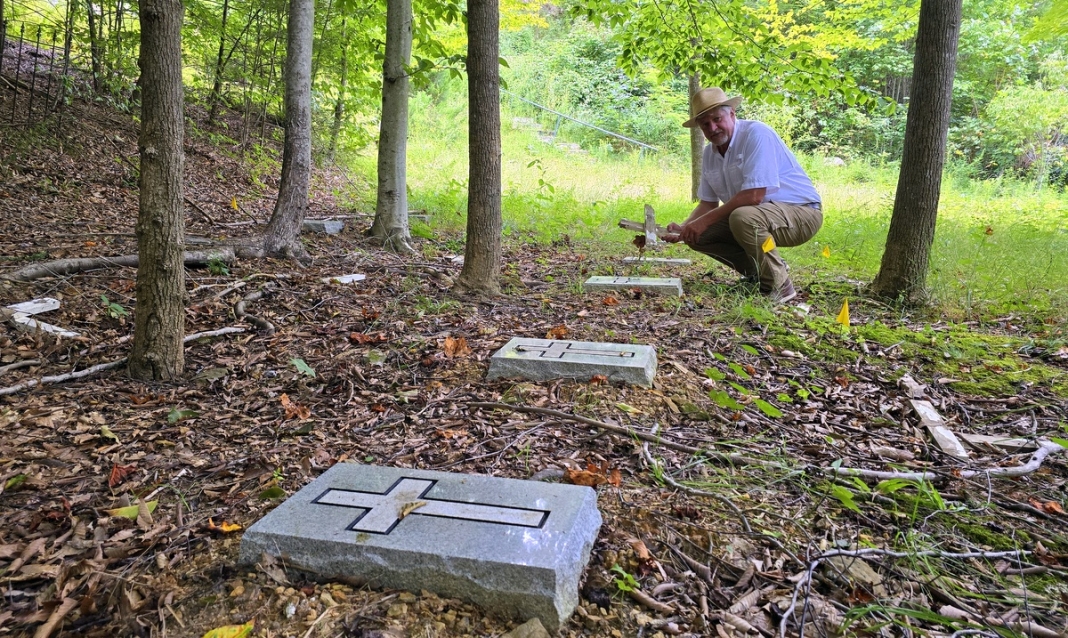


Thank you I grow up in WV and never heard of so many things there.
These stories don't always reach the ears of residences in the way they should.
Amazing story, thank you for keeping WV history alive
Thank you! It's not always easy.
I’m a storyteller. This will become part of my repertoire.
Good to know! The true history of West Virginia is actually a twisted tale of the battle of humanity against industry, legendarily played out it John Henry's battle against a steam drill.
Thank you for this. Your article is the most complete picture of this tragedy that I've gotten so far.
David, thank you for this story. There was a story in the Chronicle a few years ago about the power company literally ignoring/destroying the memorial running a line over the mountain. (?) Mom, (Wilma Richardson), local historian, helped in writing grants and acquiring historical markers. She would have been heartbroken. I understood someone had made efforts to restore it. This might be a good Eagle Scout project? Thanks for your efforts!
I’ve been there a few times and I don’t remember seeing marble headstones. I just remember the wooden crosses. Just seeing the rows of crosses gave me great sadness, but in some ways it was beautiful. A great debt is owed to these men.
Thank you for educating the citizens of WV about this tragedy.
Now that the existence of the cemetery has been brought to light, Mountaineers in the form of citizens, scout troops, school students, businesses, church groups, and civic organizations can unite and help maintain it and replace the decaying wooden crosses on the graves. WV has many gifted crafts people that would offer their talent and skills to help. Vocational technology school classes could also help.
I would like to clarify, I am not suggesting that vocational school students make crosses for the cemetery.
I respect the separation of church and state.
I sincerely hoped that citizen volunteers could come together and find a way to create and install some uniform type of upright grave markers or new crosses that could be crafted of metal, weather resistant wood, or other material that will withstand the test of time. The cost of supplies could be covered by donations.
David, I would be proud to make a donation to this cause. Please let your readers know if any initiatives arise from your article to restore and maintain the cemetery.
Where there's a will, there's a way! I'll let people know as things move forward. Hopefully something will come of this!
My Summersville Jr. High advanced art class received a grant and created a stained glass memorial piece dedicated to the Hawks Nest disaster. Although the piece is now damaged, the educational experience of doing the work will stay with those kids.
My first time reading about this horribly sad corporate cover up of an unnecessary human tragedy. Thank you.
I have the book by Hubert Skidmore. Although it's a fictionalized account of the tunnel tragedies it is based on fact and we'll worth reading.